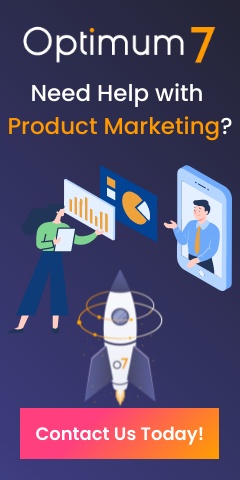 There is really no doubt that the generation of awareness, interest and inquiry into your goods and services, otherwise known as lead generation, is a huge aspect of online business… especially if you are a B2B company. If you are selling products or services to businesses, you simply must have a lead generation strategy. SEO (Search Engine Optimization), PPC (Pay per Click), Affiliate Marketing, Social Media or Traditional Marketing… regardless of the channels you use, you must aim to have a steady flow of leads coming through at all times. Why? Simple. Leads you are the mother’s milk of sales. More sales mean more money in your pocket.
There is really no doubt that the generation of awareness, interest and inquiry into your goods and services, otherwise known as lead generation, is a huge aspect of online business… especially if you are a B2B company. If you are selling products or services to businesses, you simply must have a lead generation strategy. SEO (Search Engine Optimization), PPC (Pay per Click), Affiliate Marketing, Social Media or Traditional Marketing… regardless of the channels you use, you must aim to have a steady flow of leads coming through at all times. Why? Simple. Leads you are the mother’s milk of sales. More sales mean more money in your pocket.
So, here’s a common scenario. Finally, after months of rigorous SEO (or whichever channel you’ve chosen), you’re starting to see real results. Traffic to your website and blog are at its peak and everything is going according to plan. Or is it? You’re beginning to notice that your site is attracting the wrong kinds of visitors … you know, the spammy ones. We get it. You’re frustrated that your website is attracting bad leads. The truth of the matter is, that unfortunately, everyone is going to get bad leads, whether they like it or not. It’s a fact. There is literally no sound way to filter the rotten eggs without simultaneously turning the best of batch away from your site. What do you do about this sticky situation? You track. You qualify.
1. Always Tracking Leads and Traffic
Tracking is everything in lead generation. First and foremost, you will need to ask yourself the following question…
“What do I want my prospects to do when they land on my site?”
a) Opt in for an email list
b) Fill in a form with contact information
c) Call and connect directly to a sales representative
d) Make a purchase
Once you’ve decided on the above, you must use analytics to accurately track your leads and traffic. Let’s consider this scenario… you got a lead last week and just closed the deal today. Can you track it back to the original source? You closed business with a $50K prospect, and you know for sure it’s a website lead. Can you track it back to the original source? Let’s keep it simple.
Can you tie the money back to the source?
Of course, you can always track your leads and traffic through analytics. If you’re not doing this, you need to start doing it.
2. Qualifying Good Leads 
So by now you’re probably wondering, yes, but how do I qualify good leads? There are a couple of ways. Again, you’ve got to track it back to the original source. We cannot stress this enough. You need to have either a bi weekly or monthly recap of all your leads and you need to analyze them to see where they came from and which one’s you’ve closed and so forth.
Quick Tip: At Optimum7, we use a combination of Wufoo forms, Basecamp and Highrise to track everything. Using these tools, we’re able to easily do the following:
1) Track everything through Google Analytics
2) Ensure every lead that comes in is registered on the Wufoo database and
3) Ensure every lead that comes in is also registered on Highrise
If you commit to all of the above, your sales people will know exactly where your sales are coming from and you will know which sales person handled that lead.
It then falls on the sales person to further qualify the leads through direct interaction either face-to-face or over the phone. Drawing from the Sandler Sales strategies, the sales person needs to determine if there is PAIN i.e. does the prospect have real problems that are sufficiently irritating or painful that there is enough motivation to actually do something about it. Then the representative needs to verify the existence of a BUDGET for obvious reasons. Lastly, there needs to be confirmation of DECISION i.e. the identification and presence of the decision maker and / or the decision making process. In essence, the factors of PAIN, BUDGET and DECISION are the key qualifiers that need to be used for transforming a lead into a prospect, potentially hot prospect.
Most FAQ: Why Am I Getting So Many Spam Leads?
First, let’s identify what “so many” means. Is it 10%, or is it 50%? It is most likely not that many. The only reason you feel like it is “so many” is because these particular kinds of leads, quite frankly, irritate you the most. We are an Internet Marketing company, so we understand your frustration. We have companies from India contacting us via our contact form on our site trying to sell us Internet Marketing services. How annoying is this on a scale of 1-10? 20. How do we make it stop? There are a couple of things we could do, but you’ll soon see why we’re thinking twice about acting on them since any effort to limit bad leads will also limit the good leads.
Clearly State on Our Contact Form
a) “Other Internet Marketing companies, do NOT contact us”
Similarly, if you’re a B2B or B2C company, you can clearly state one of the following:
b) “We do NOT service consumers” or
c) “We do NOT service businesses”
There is, however, a flaw in this approach. It happens to be irrelevant to exactly those leads you really want. Think about it. If a legitimate lead is looking for you, you’re turning them off immediately. They would probably wonder “why on earth would a business put this on their contact form?” Even though this may help to filter out some of the bad leads you are getting, it is simultaneously going to turn away some of your legitimate leads as well, simply because that kind of language is not what people like to read, even if it not addressed to them specifically.
Optimizing the Form Fields
We could also include a drop down on our contact form.
“What kind of organization are you?”
a) Independent business
b) Individual
c) Internet Marketing agency
We don’t want Internet Marketing agencies. Right? So we’re going to give everyone who selects option c) a big fat error message. Quite simply, we don’t want you.
“Currently we do not accept submission forms for Internet Marketing agencies”
 There is, however, still a flaw in this approach. Do you really think those pestering Internet Marketing companies are going to let that stop them? Not likely. It’s proven. They will still go back and submit the form using a different option. So it’s really not going to help you at all… you’re still going to get bad leads, and ultimately, you’re going to ruin the possibility of attracting legitimate leads by adding more fields to your contact form. How so, you ask? It’s the fundamental law of conversion. The more fields you add to a form, the lower your conversion rate will be. Similarly, the harder it is to do business with you, the less business you will receive. It’s the same principal.
There is, however, still a flaw in this approach. Do you really think those pestering Internet Marketing companies are going to let that stop them? Not likely. It’s proven. They will still go back and submit the form using a different option. So it’s really not going to help you at all… you’re still going to get bad leads, and ultimately, you’re going to ruin the possibility of attracting legitimate leads by adding more fields to your contact form. How so, you ask? It’s the fundamental law of conversion. The more fields you add to a form, the lower your conversion rate will be. Similarly, the harder it is to do business with you, the less business you will receive. It’s the same principal.
As you can see, no matter what kind of language you use on your contact form and no matter how you try to filter the good from the bad, you are always going to get spammy and bad leads. The key here is to track everything accurately so you can know which channels are bringing you bad leads (you can eliminate those channels in the long run) and to also have great sales representatives that can weed out the good leads from the bad leads.
Most importantly, don’t waste your time on trying to “fix stupid.” It’s impossible. There will always be folks who wish to game the system or somehow feel that these tactics will somehow work. Spend your time analyzing the things about your lead generation efforts that actually are working and use your head to promote those efforts further to maximize the aggregate number of really good leads.
Optimum7 professionals are experts in lead generation. We understand the importance of tracking and qualifying your leads in order to separate the good from the bad. Contact Us today for an initial, no obligation consultation.




